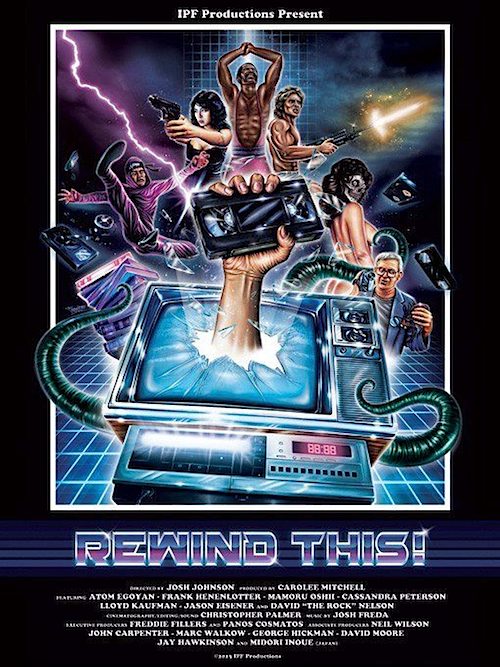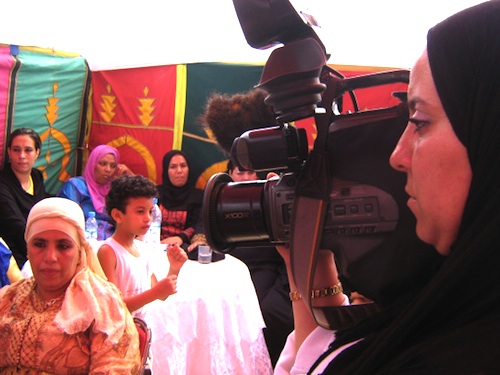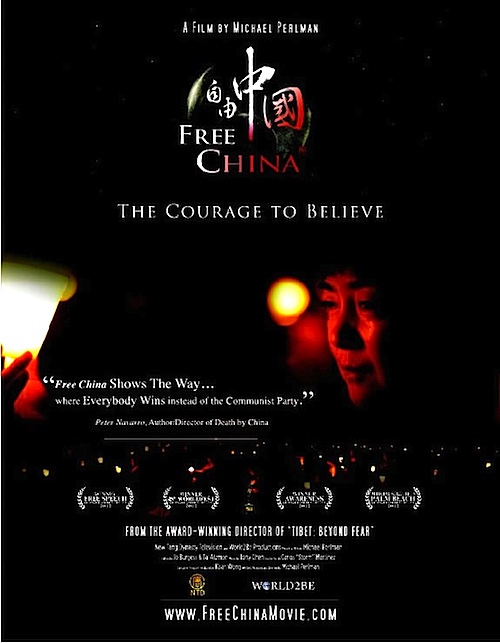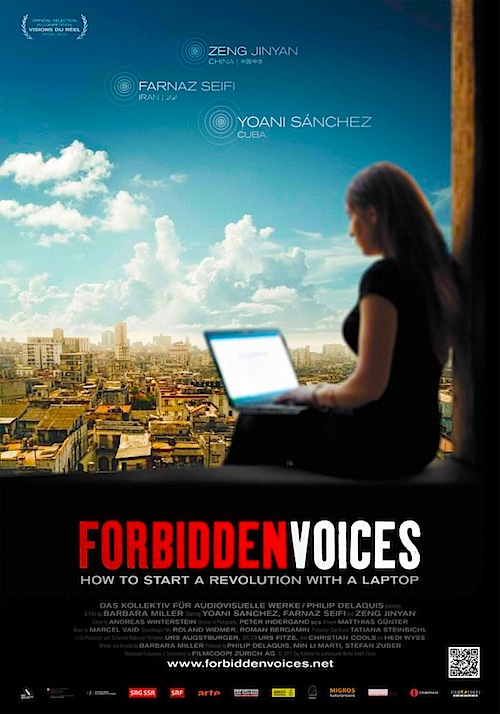By Joe Bendel. The classic 1980’s movie hero was a commando who could inexplicably bury himself in mud, yet spring up at exactly the right time to ambush an enemy army. Today’s prototypical protagonist is a man-child who tries to win back his elfin girlfriend by working in an organic food coop. How did we go so far wrong as a culture? Back in the ’80s, the best way to watch a bunch of crap blow-up was on VHS. It still is for some die-hards. Josh Johnson profiles the VHS tape and the people who love it in Rewind This, which screens during the 80’s themed Awesome Fest in Philadelphia.
There are scads of oddball films that were released on VHS, but have yet to get the DVD treatment. Partly this is because the big studios were late to the party (like they were right on time for the digital download thing), leaving the field open to bargain hunting independents. More importantly, the voracious demand of mom-and-pop rental stores across the country required a constant stream of new product, regardless of good taste or logic. Those zero budget wonders are a major reason why some collectors bitterly cling to their VHS tapes.
 Johnson gives a good overview of VHS’s origins and its triumph over Betamax. While he covers the love affair between VHS and porn, he does not belabor the point, preferring to focus on the old school action and horror movies that became mass market commodities thanks to home video. In addition to a motley crew of blogger-collectors, Rewind features commentary from legendary grindhouse director Frank Henenlotter, Cassandra “Elvira, Mistress of the Dark” Peterson, Lloyd “Troma” Kaufman, David “The Rock” Nelson, and dudes from SXSW, Something Weird, Twitch, Severin Films, Cinefamily, and Alamo Drafthouse. There is also a Japanese contingent, including Shinji Imaoka, the director of Underwater Love, probably the most endearing Pinku Eiga film ever.
Johnson gives a good overview of VHS’s origins and its triumph over Betamax. While he covers the love affair between VHS and porn, he does not belabor the point, preferring to focus on the old school action and horror movies that became mass market commodities thanks to home video. In addition to a motley crew of blogger-collectors, Rewind features commentary from legendary grindhouse director Frank Henenlotter, Cassandra “Elvira, Mistress of the Dark” Peterson, Lloyd “Troma” Kaufman, David “The Rock” Nelson, and dudes from SXSW, Something Weird, Twitch, Severin Films, Cinefamily, and Alamo Drafthouse. There is also a Japanese contingent, including Shinji Imaoka, the director of Underwater Love, probably the most endearing Pinku Eiga film ever.
Rewind does not skimp on the vintage clips, reveling in the aesthetics of direct-to-video exploitation movies with lushly painted pre-Photoshop covers. Unfortunately, the not infrequent whining about big media corporations quickly grows tiresome. It is also rather off the mark. No distributors were bigger cutthroat capitalists than Golan-Globus, yet they brought us VHS milestones like the American Ninja franchise. Sadly, viewer tastes just shifted from red meat to vegan comfort food.
Despite the occasional eye-rolls, Rewind This offers some heartfelt nostalgia for some of the scrappiest films ever haphazardly released. Good, kind-of-clean fun overall, Rewind This! is recommended for all cult cinema fans when it screens Monday night (6/17) as part of Awesome Fest, which also totally deserves your support for their 30th anniversary screening of The Adventures of Bob & Doug McKenzie: Strange Brew on July 8th.
LFM GRADE: B
Posted on June 14th, 2013 at 4:47pm.




